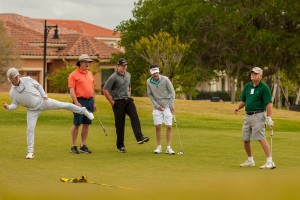This is the 13th and final part of a series of practice tips titled “Tips for Improving”.
In those practice tips we discussed how we work with our students to create new habits rather than breaking old habits. It is essentially impossible to break bad habits (our mind/body is not set up that way) … but we are set up to be able to create new habits and ultimately make changes/create new movements, etc. we want.
We talked about a book we strongly recommend – The Little Book of Talent/52 Tips for Improving Your Skills by Daniel Coyle.
It is described as a manual for building a faster brain and a better you. It is an easy-to-use hand book of scientifically proven, field tested methods to improve your skills – your skills, your kids’ skills, your organization’s skills – in sports, music, art, math and business. The product of five years of reporting from the world’s greatest talent hotbeds and interviews with successful master coaches, it distills the daunting complexity of skill development into 52 clear, concise directives.
Whether you are 10 or 100, this is an essential guide for anyone who ever asked, “How do I get better?”
This book is available at Amazon.com
The last instructional newsletters (Tips for Improvement Part 1 through 12) we discussed 48 tips for improvement from staring a who you want to become, to being willing to be stupid, to finding the sweet spot, to practicing by yourself, to taking a nap…. Again, if you have not reviewed these past practice tips, would recommend.
This instructional newsletter (Part 13) we cover the next 4 tips for improving your skills and relate them to you learning/working on your single plane swing and golf game.
49. When You Get Stuck, Make a Shift
We all know the feeling. You start out a new skill (or creating a new habit), you progress swiftly for a while, and then all of a sudden… you stop. Those are call plateaus.
A plateau happens when your brain achieves a level of automaticity; in other words, when you perform a skill or habit on autopilot, without conscious thought. Our brains love autopilot, because in most situations it makes us feel very comfortable. It allows us to perform multiple tasks without freezing our brains on what we are trying to do. When it comes to developing talent, autopilot is the enemy, because it creates plateaus.
Best way to get past a plateau(s) is to “jostle” yourself beyond it; change your practice method so you disrupt your autopilot. Ways to do this – slow things down, go so slow that you highlight previously undetected mistakes. Do the task/habit in reverse order.
Seek help or another opinion on what you can do to get past the plateau(s) – those that are more proficient then you have also hit the same plateau(s) – ask them what they did to get past those same plateau(s).
50. Cultivate Your Grit
Grit is the mix of passion, perseverance, and self-discipline that keeps us moving forward in spite of obstacles. Grit is what makes the difference in the “long run”.
Grit isn’t inborn. It’s developed, like a muscle, and that development starts with awareness.
When you hit an obstacle – how do you react?
Do you tend to focus on the long-term goal(s) or move from interest to interest?
What you are seeking in the long run?
Grit it the ability to overcome obstacles (no matter how much time), the ability to focus on long term goals without going from one interest to another, and always realizing that you are in it for the “long run”.
If you would like more information in this area – strongly suggest reading Mr. Coyle’s original book – “The Talent Code”.



